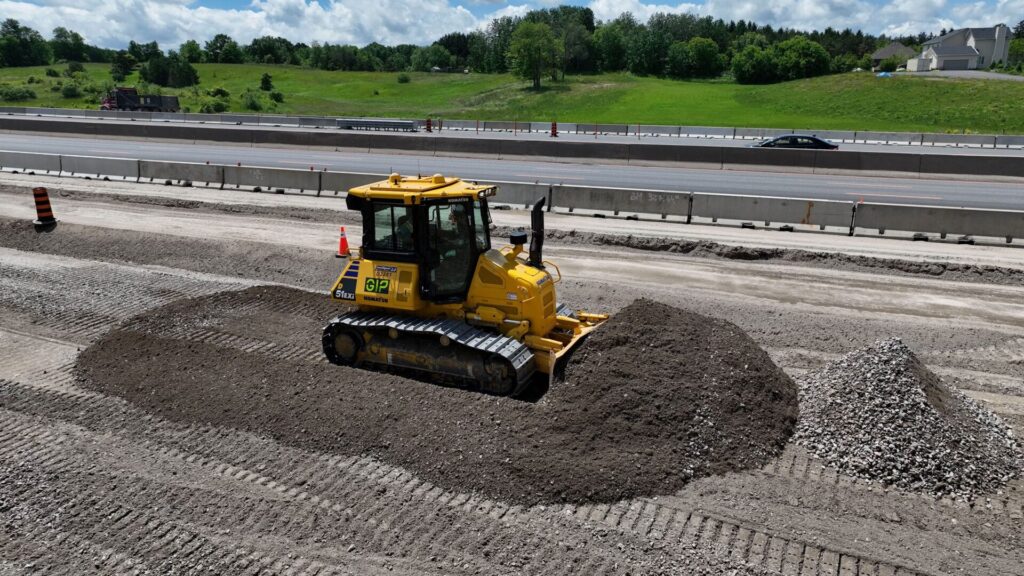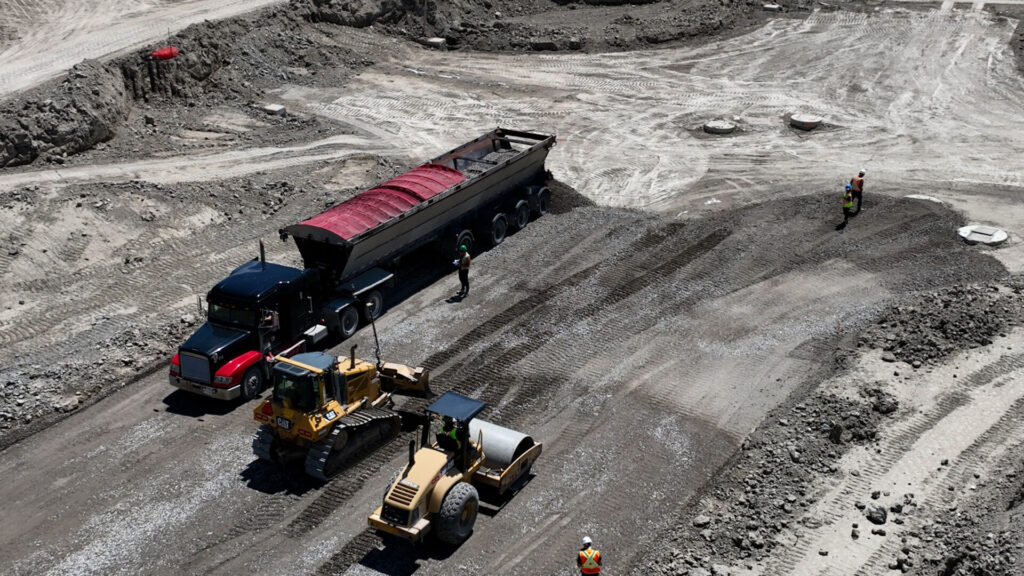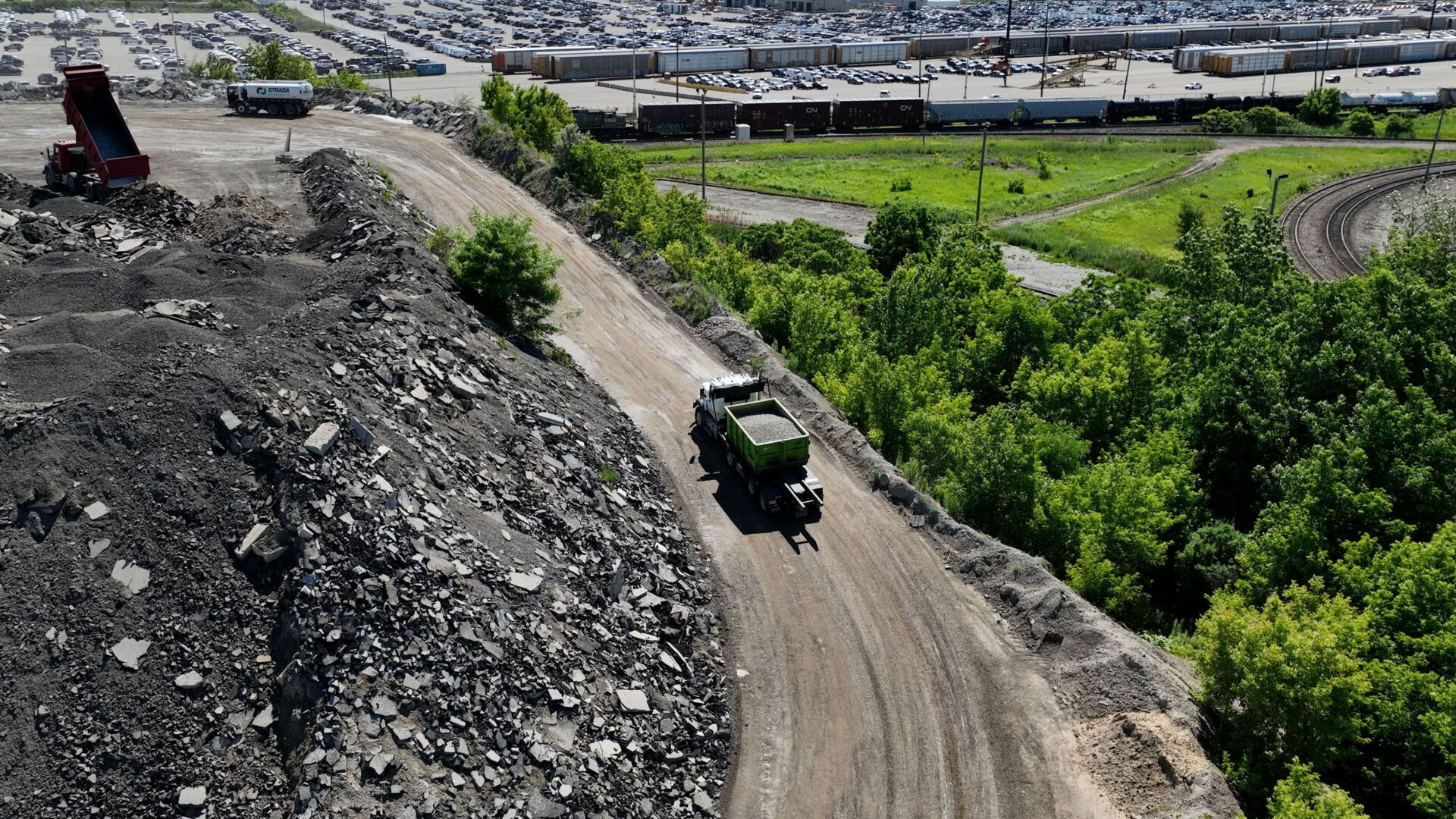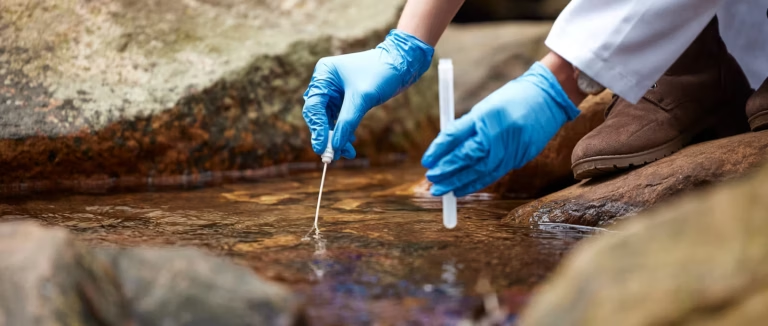Monday, June 30, 2025
Discover how Ontario can cut costs, reduce emissions, and conserve natural resources by making Recycled Crushed Aggregates (RCA) the industry standard in linear infrastructure projects.
In 2021, the Town of East Gwillimbury took a step toward building infrastructure more sustainably by incorporating 13,230 tonnes of Recycled Crushed Aggregate (RCA) into its Queensville Subdivision Phase 6 project. By doing so, the town not only saved $152,145 in taxpayer dollars, but also reduced the project’s overall carbon footprint by the equivalent of taking 180 gas cars off the road for a month.
While climate change is a global issue, solutions start at the local level. With an ambitious agenda for growth, we can do our part with more sustainable building practices that will stretch capital dollars further while reducing carbon emissions. The East Gwillimbury project is just one example of how RCA can transform municipal transportation and residential projects—offering cost savings, reducing environmental impacts, and conserving natural resources. And the bigger the project, the bigger the cost savings and carbon reductions.
For example, the Ontario Ministry of Transportation (MTO) used more than 300,000 tonnes of RCA as part of the widening of Hwy 400 between Major Mackenzie Dr. & King Road, generating $1.2 million in taxpayer savings while substantially reducing greenhouse gas emissions associated with the project. MTO has been using recycled materials in the construction and maintenance of its 400-series highways since the 1970s and is still the largest user in the province.
However, Ontario’s municipalities own and manage more public infrastructure than the federal and provincial governments combined. They are the largest consumers of aggregates with more than 50 per cent of their budgets allocated to construction and infrastructure. As a result, increasing the use of RCA in municipal projects holds the greatest opportunity to maximize their economic and environmental benefits.

URGENT NEED FOR SUSTAINABILITY
RCA is the solution to two big problems: reducing construction waste and extending the life of existing pits and quarries.
Every year, tens of millions of tonnes of asphalt and concrete are removed from construction sites across Ontario as roads are repaired, bridges are maintained, and other critical infrastructure is replaced or expanded. If not recycled and reused, these valuable materials will end up in landfills. And Ontario has less than ten years until all landfills in the province are full, according to a live countdown run by Waste to Resource Ontario.
On the other hand, aggregates are the foundational materials for our infrastructure. They are a finite and non-renewable resource.
The Greater Toronto Area already has an aggregate deficit: it produces 25 million tonnes but consumes 73 million tonnes. The region is projected to consume more than 1.5 billion tonnes of aggregate by 2041 to deliver the housing, transportation, and other critical infrastructure our growing communities need, while exhausting all close to market sources.
Transportation is up to 60 per cent of the cost of aggregates. This means that every extra kilometer aggregate has to be trucked to a job site increases the overall building costs and carbon emissions. Since RCA is available at a fraction of the distance to new construction sites, the need for long-haul heavy truck transport is reduced, along with carbon emissions, project costs, traffic congestion, and wear and tear on roads.
If municipalities across Ontario adopted a recycling rate of just 20 per cent, it would avoid extracting up to 33 million tonnes of new aggregate per year across the province. This would result in an annual cost savings of $264 million and greenhouse gas emissions equivalent to taking 15 million gas cars off the road for an entire year.
UNDERSTANDING RCA
Asphalt and concrete are 100 per cent recyclable. Recycled Crushed Aggregate (RCA) is asphalt and/or concrete reclaimed from demolished roads, bridges, sidewalks, and other structures. These materials have already met performance specifications, and when reclaimed, undergo an additional rigorous process of crushing, screening, testing, and quality control to be repurposed as construction material for new projects.
There are already numerous recycling plants that can turn rubble into RCA for use in new construction projects. Here is how the recycling process works:
- Collection and Inspection: Concrete and asphalt rubble that meets quality conditions is diverted from landfills and delivered to recycling plants, where it is visually inspected to ensure it’s free from contaminants like organics, wood, plastics, and rebar.
- Crushing and Separation: Approved materials are off-loaded at designated areas where a wheel loader transfers the rubble into a two-stage crusher to achieve gradation requirements. Magnets remove rebar and other metallic materials during crushing, while plant personnel manually eliminate any other present contaminants.
- Screening and Quality Control: The material undergoes further screening and testing to ensure it is suitable for its intended application.
Stringent provincial standards (OPSS1010) ensure that RCA meets physical properties and gradation requirements that are equivalent to, and sometimes exceed, that of primary aggregates. Extensive testing has shown that when RCA conforms to OPSS1010, project owners can be confident that these materials will meet all performance requirements and quality expectations.
The Toronto Area Road Builder Association (TARBA) has developed a Quality Control Plan that provides detailed guidance and best practices on producing RCA, offering a valuable resource for producers, contractors, and project owners.

RECOMMENDATIONS FOR WIDER RCA ADOPTION
Despite its advantages and proven performance globally, RCA adoption remains limited in Ontario, especially at the municipal level. Even though Ontario has provincial standards guiding material use, municipalities have discretion in implementing these standards and setting their local policies. As a result, practices can vary widely by municipality, even in an economically significant region like the Greater Toronto Area. For example, most municipalities have specifications requiring “primary-aggregate only” as part of their tenders, missing out on the benefits RCA use offers to both municipal capital budgets and their net-zero targets.
To eliminate existing barriers and maximize the benefits of RCA, we need to:
- Incentivize Policy Changes: Incorporate RCA in municipal tenders for roads, bridges, subdivisions, and transit projects, and set minimum recycling rates.
- Standardize Material Requirements: Align municipal standards with OPSS1010 to reduce administrative burden, ensure quality and compliance, and encourage wider adoption.
- Build Education and Awareness: Share the extensive research, quality control measures, and the increasing number of applications for RCA with project owners and contractors to build further capacity and confidence in using recycled materials.
IT’S NOT AN IF, BUT A WHEN
As Ontario’s population grows, so does the need for infrastructure that supports growth while minimizing environmental harm and keeping construction costs at bay. RCA represents an undeniable opportunity to align environmental stewardship, fiscal accountability, and industry innovation. As evidenced from international jurisdictions, and as demand for construction project environmental sustainability increases, RCA will become the norm-–it’s just a matter of how fast we adopt it.
By embracing RCA, municipalities can build a sustainable future where taxpayer dollars go further, natural resources are conserved, and the construction industry remains competitive and innovative. It’s a solution where everyone benefits. The time is now to unlock the full potential of RCA and build a future where growth doesn’t come at the cost of our planet.











